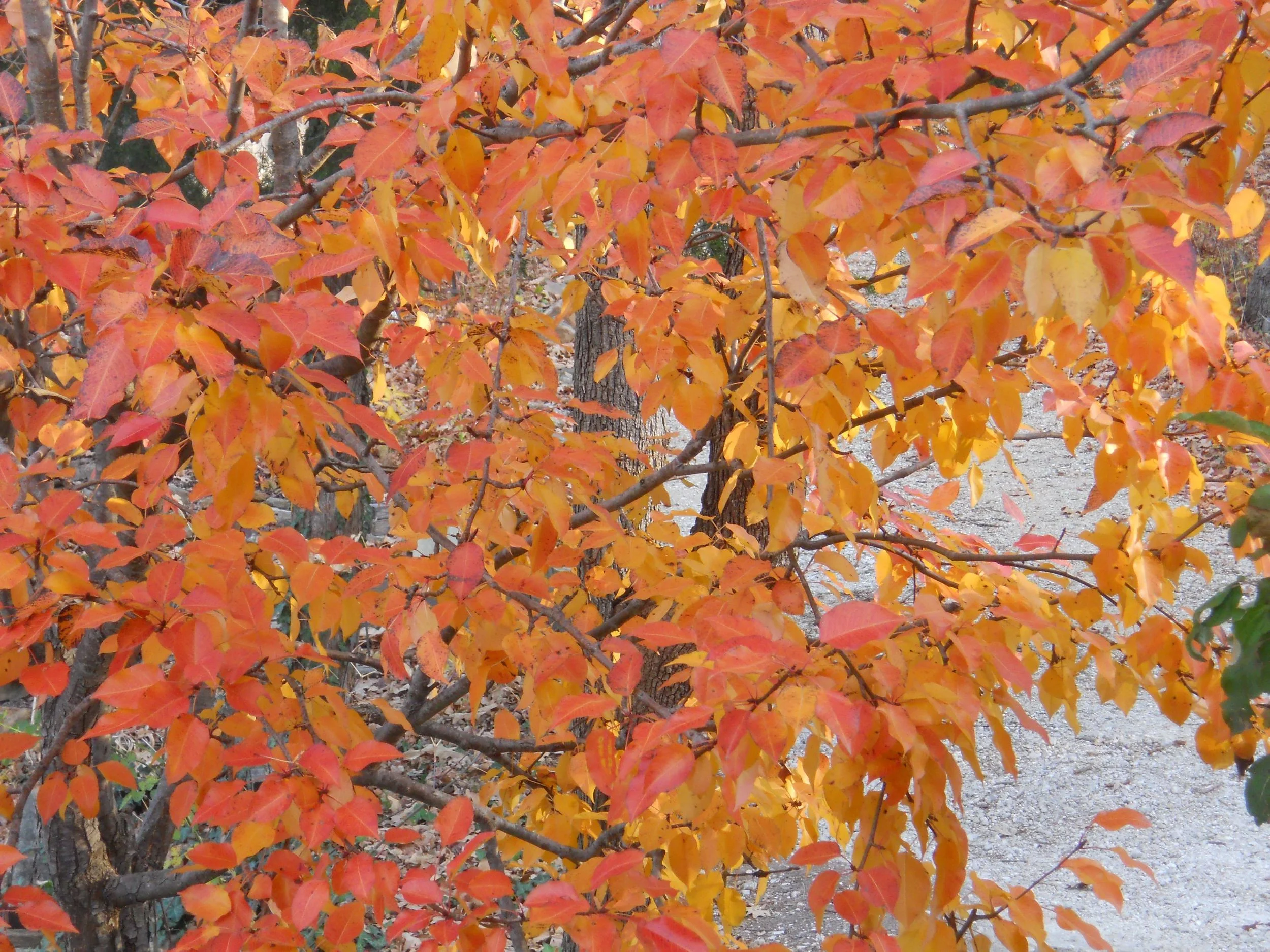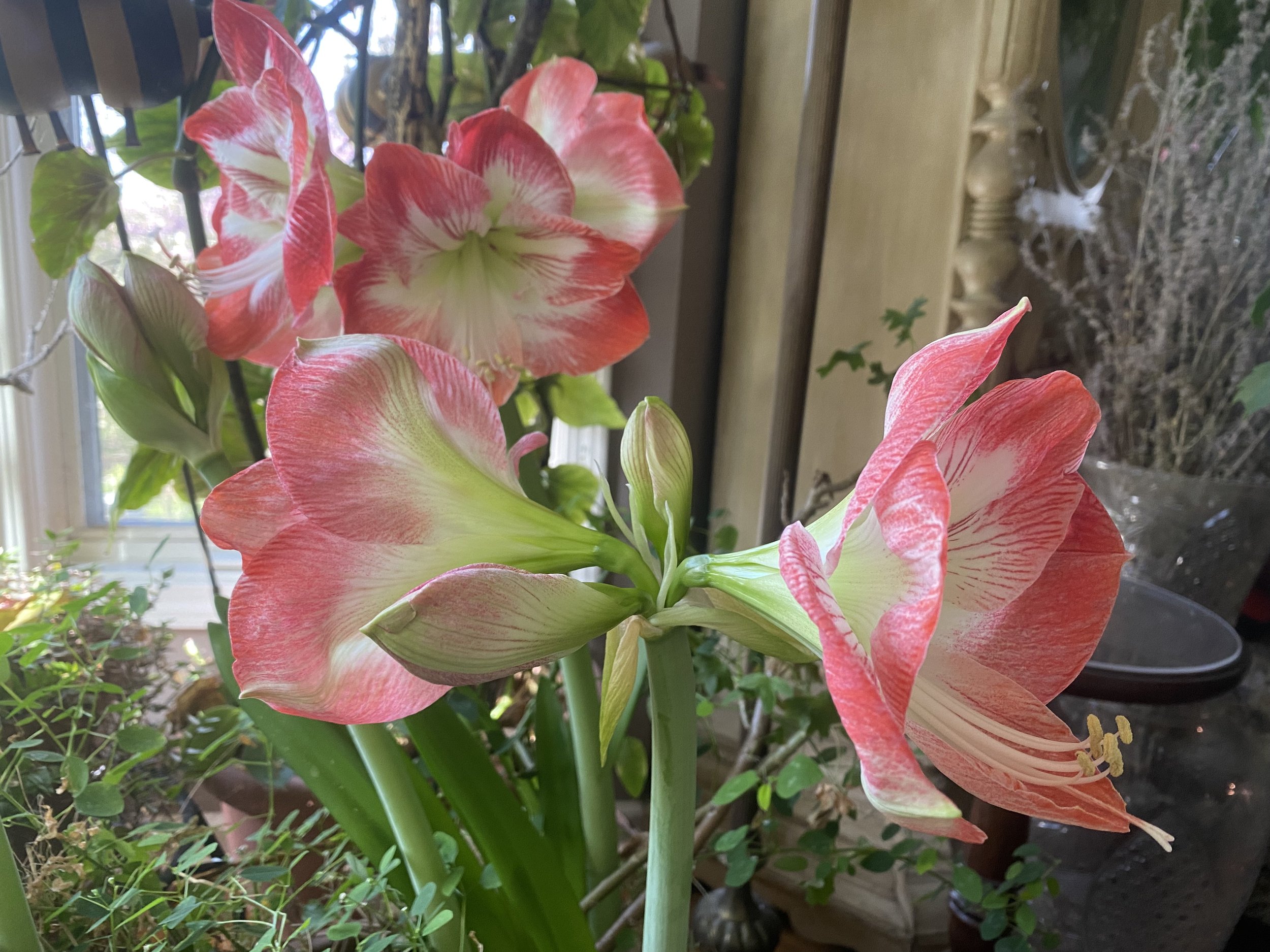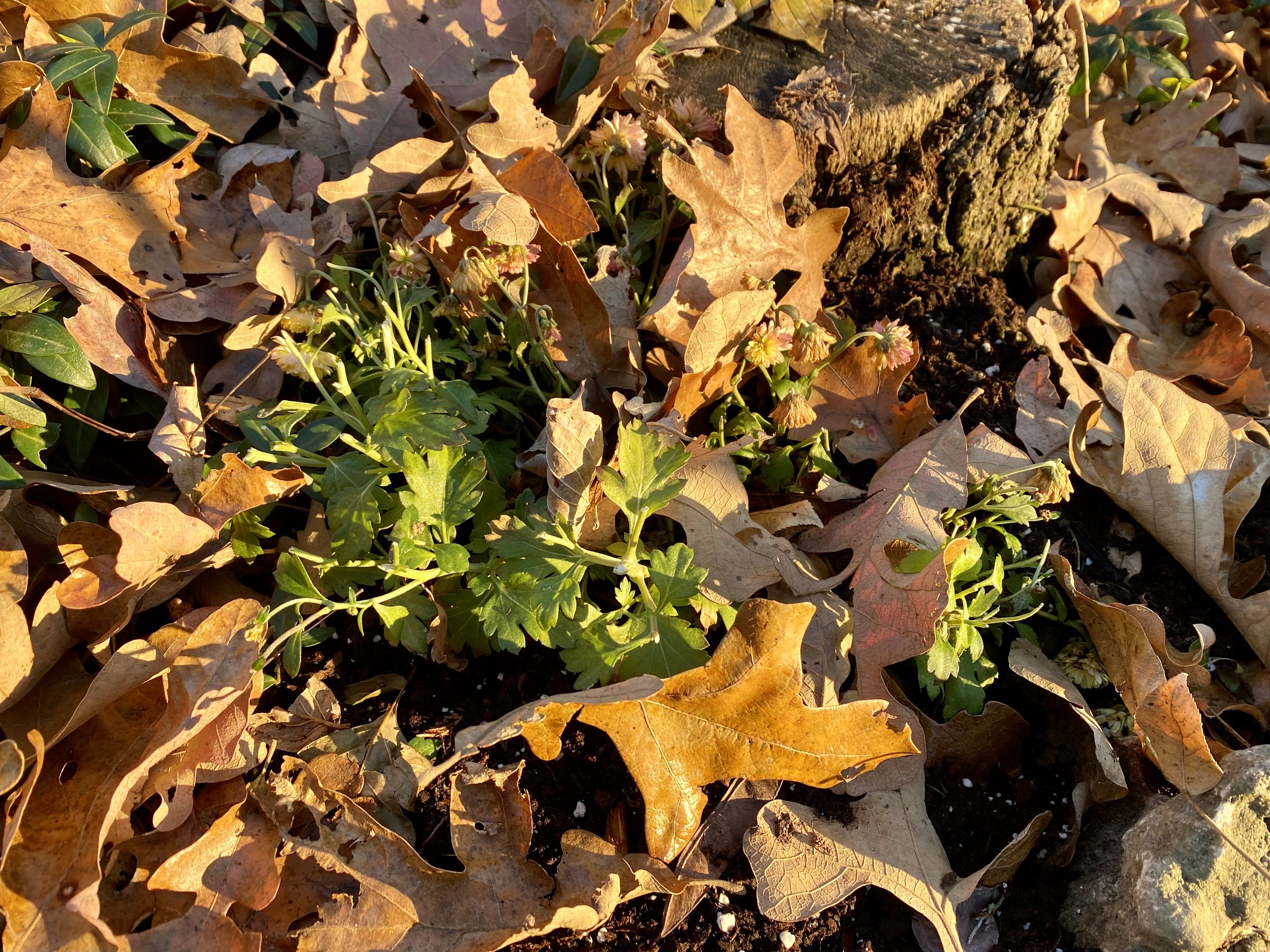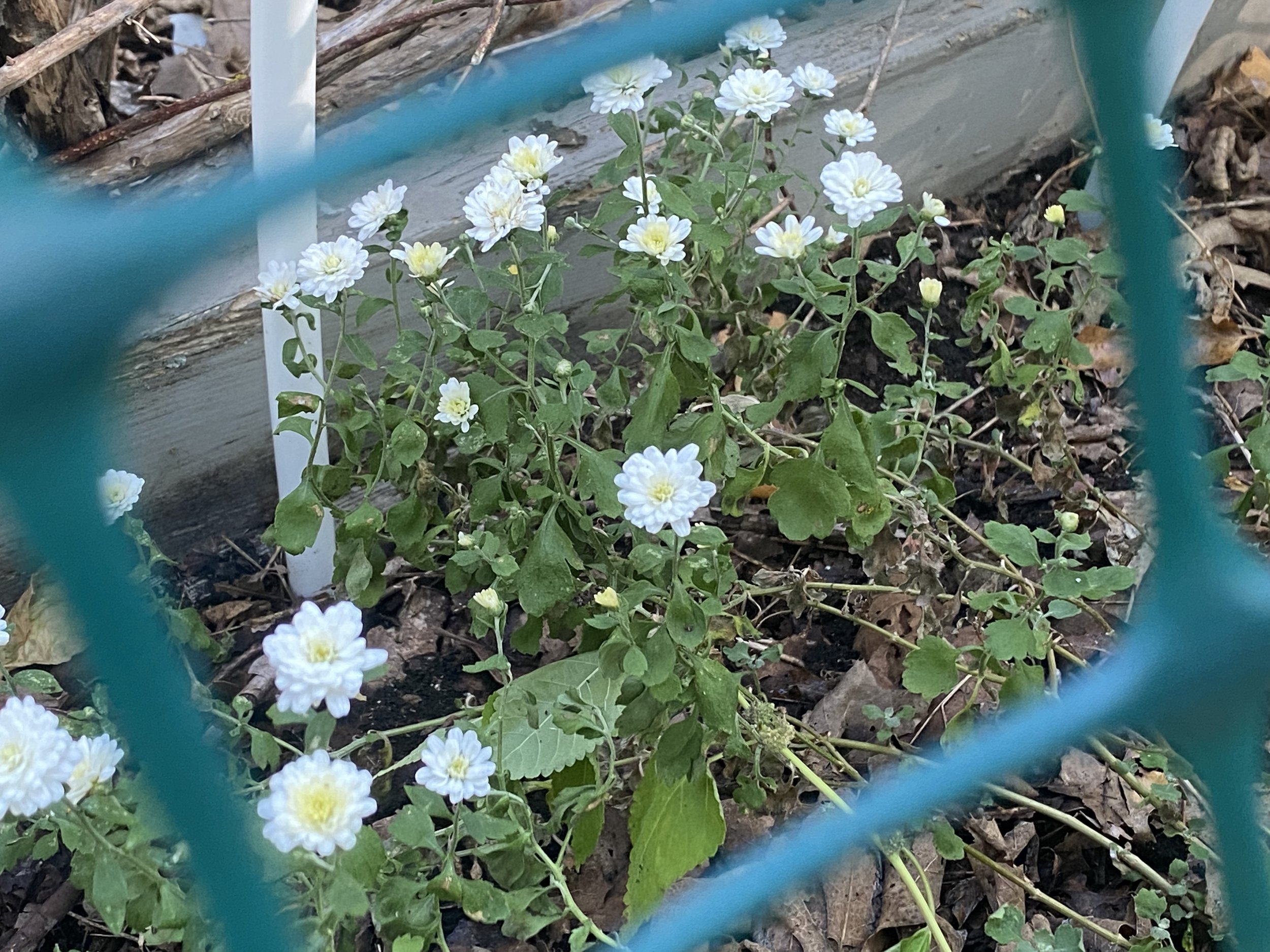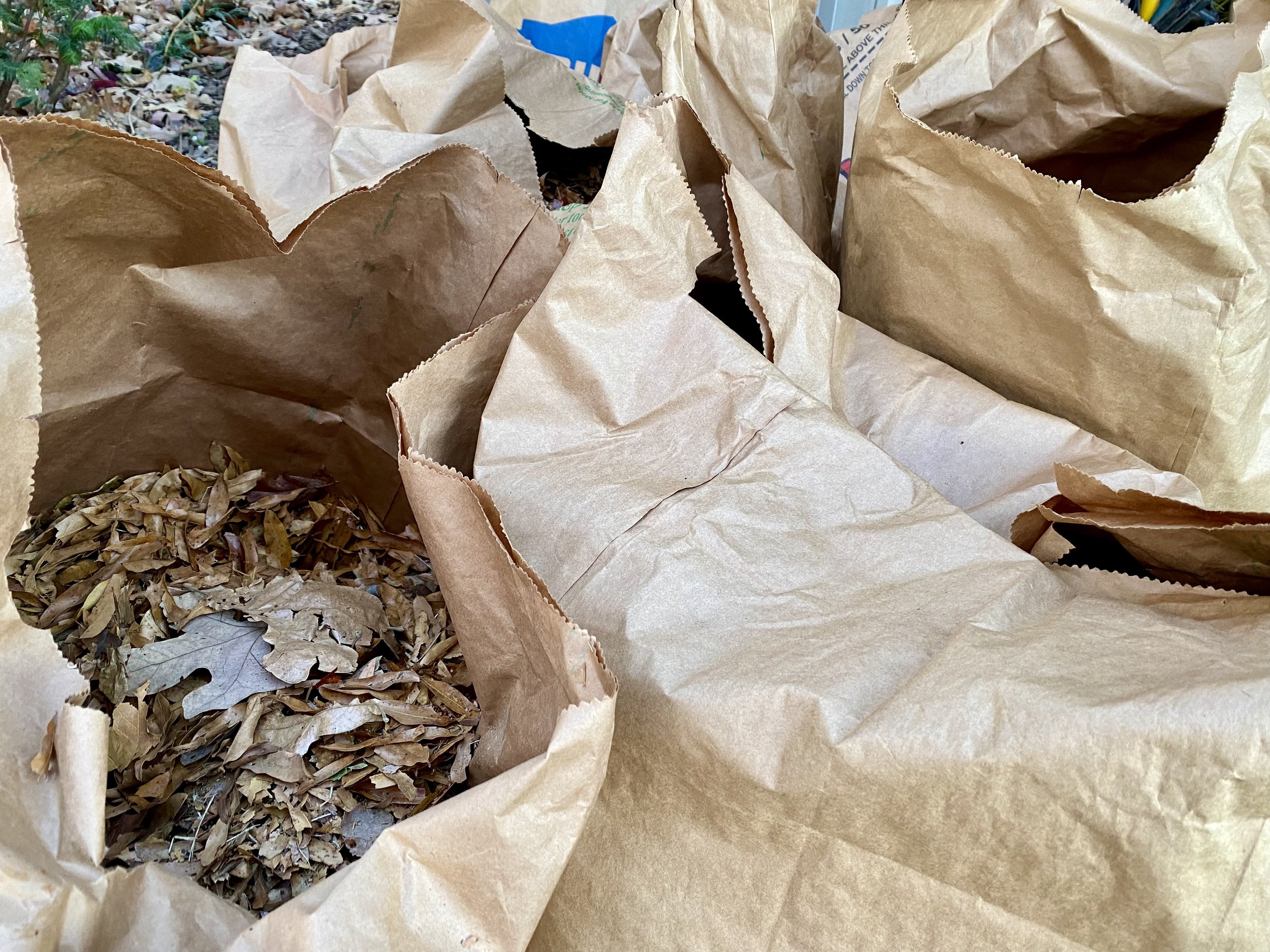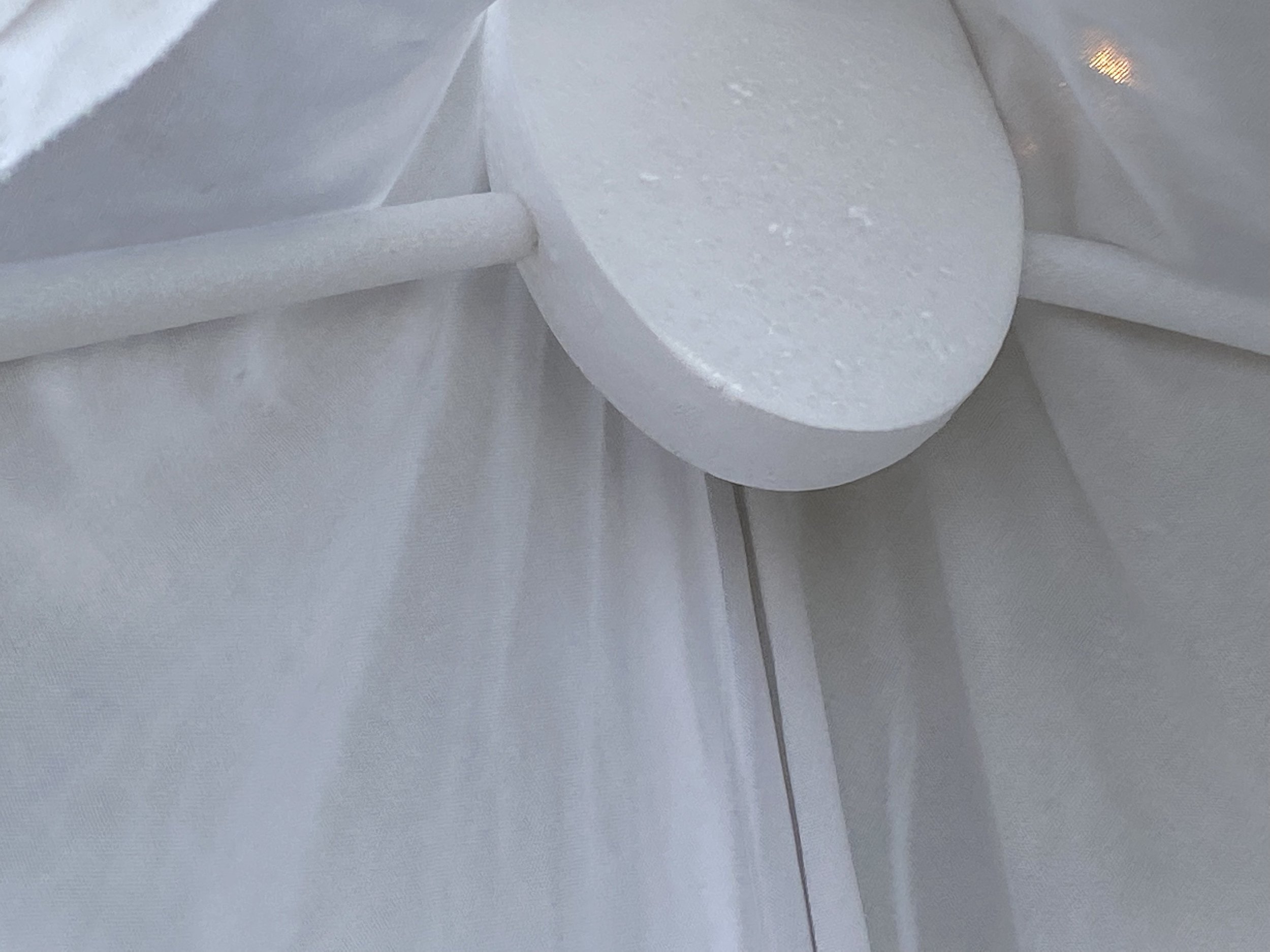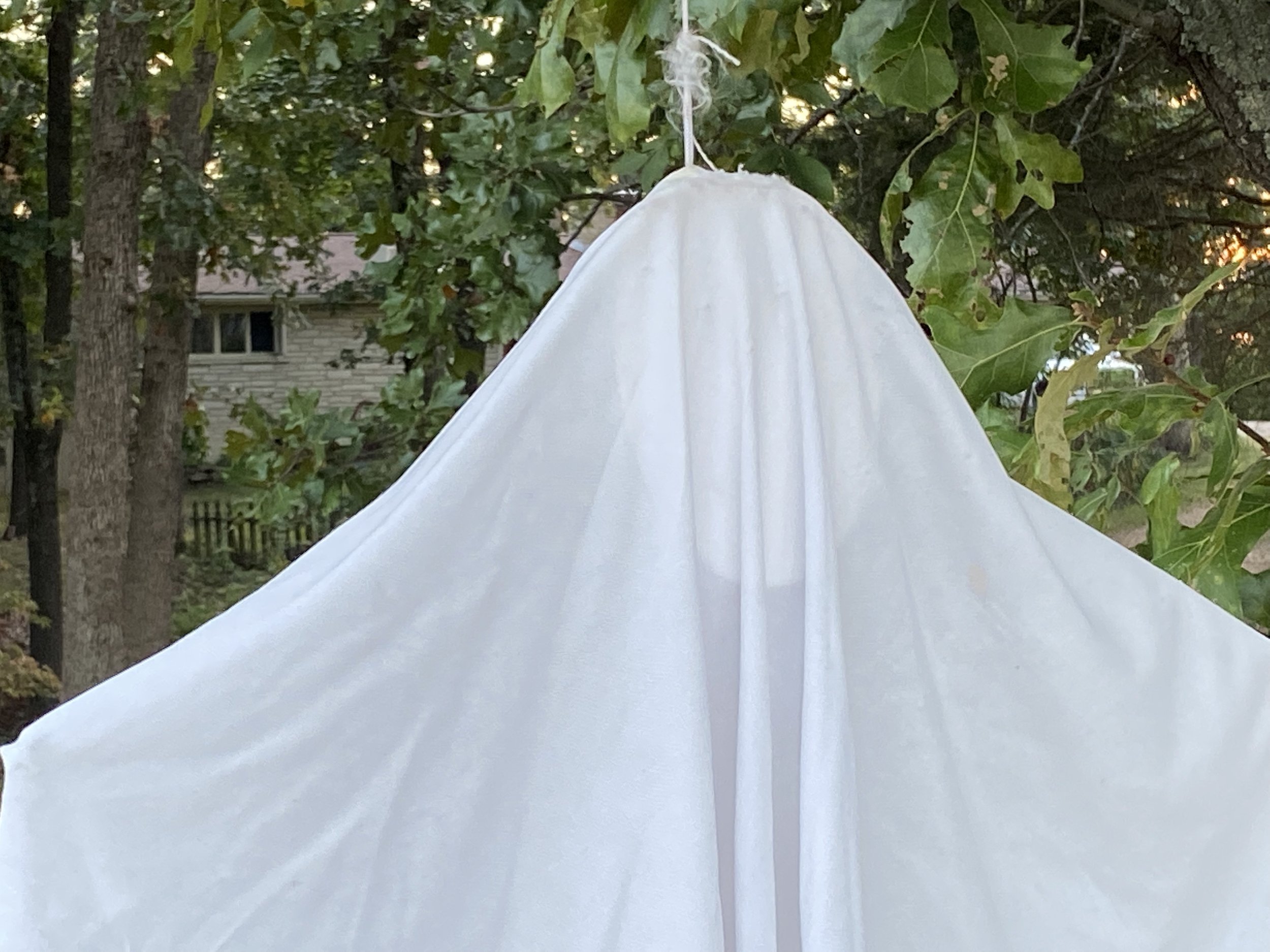Amaryllis Care
/apple blossom amaryllis bulbs, some I’ve had for years, re-blooming. (charlotte ekkek wiggins photo)
Amaryllis Care
Amaryllis bulbs are popular for their large, colorful flowers and ease of care, especially during the winter months. Here's a step-by-step guide on how to plant and care for amaryllis bulbs:
Planting Amaryllis Bulbs:
1. Choose a Bulb: Select a healthy, firm bulb. Larger bulbs generally produce more flowers.
2. Select a Pot: Choose a pot that is 1-2 inches wider than the diameter of the bulb. Make sure it has drainage holes at the bottom.
3. Planting Depth: Fill the pot about one-third to one-half full with well-draining potting soil. Place the bulb in the center of the pot and add more soil, leaving the top third of the bulb exposed.
4. Watering: Water the bulb thoroughly after planting. Be careful not to overwater; excess water can lead to rotting. Let the top inch of the soil dry out before watering again.
Caring for Amaryllis Bulbs
1. Light: Place the pot in a bright, sunny location. Amaryllis plants need bright, indirect light to grow and bloom properly.
2. Temperature: Keep the plant in a room where the temperature is around 60-70°F (15-21°C). Cooler temperatures can prolong the bloom time.
3. Watering: Water the plant sparingly until you see the stem and leaves emerging. Then, water more regularly, keeping the soil evenly moist but not waterlogged.
4. Support: As the flower stalk grows, it might need support to prevent bending or falling over. You can use a stake or decorative support to keep it upright.
5. Fertilization: Once the flower buds appear, you can feed your amaryllis with a balanced liquid fertilizer every 2-4 weeks. Follow the package instructions for the proper dilution and application.
6. Deadheading: Remove spent flowers to encourage the plant to put more energy into developing new blooms.
7. After Blooming: After the flowers fade, cut the flower stalk about an inch above the bulb but leave the foliage. Continue to water and fertilize the plant as usual. Amaryllis can be encouraged to bloom again next year.
8. Dormancy: In late fall, stop watering and let the plant go dormant. Store the pot in a cool, dark place for 6-8 weeks. After this dormancy period, bring the plant back into the light, resume watering, and the cycle can begin again.
These bulbs are easy to grow and even easier to get to regrow. Some of mine are now 15 years old and big!
For more tips on gardening, beekeeping, cooking and easy home decor, subscribe to my weekly Garden Notes.
Charlotte
